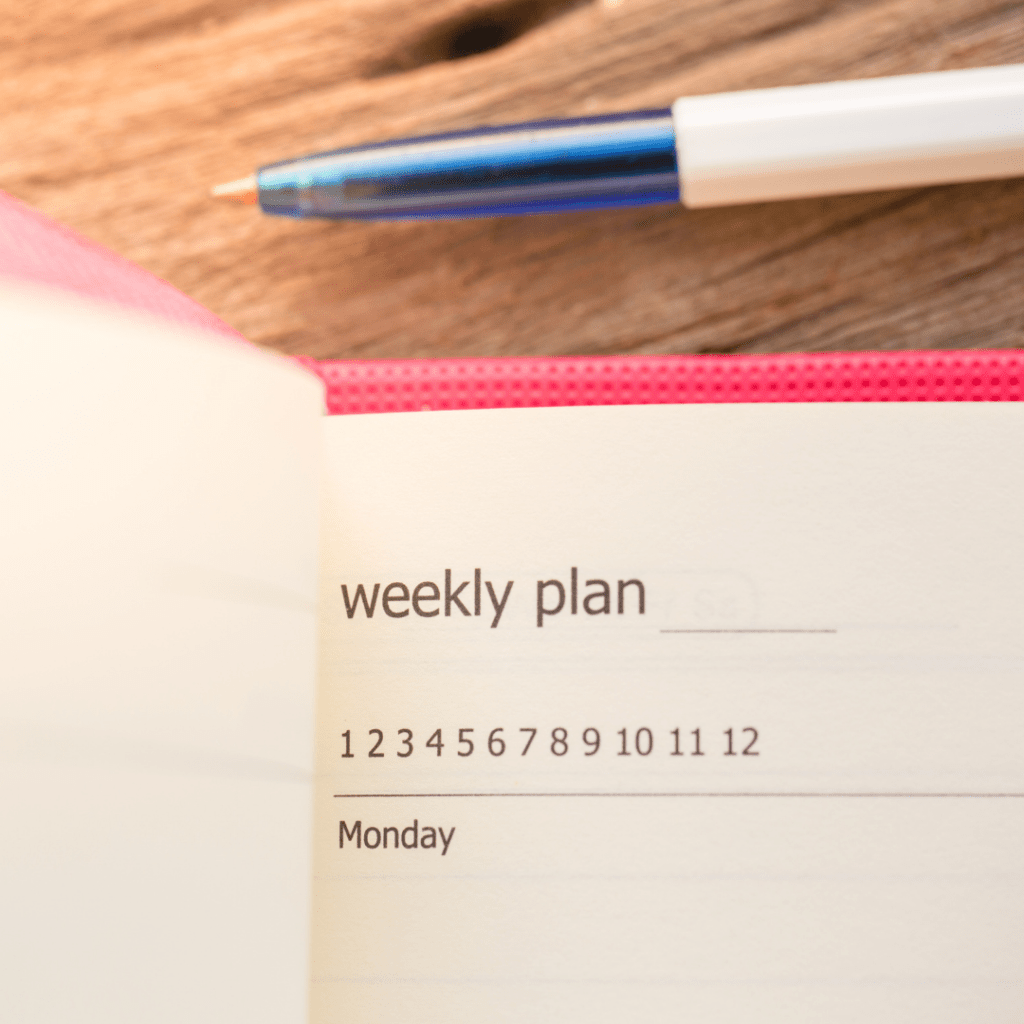
Have you tried to use a daily planner…or several, and they didn’t work? Are you thinking if you could find the “right one” you’d finally get organized? I can tell you from experience and working with my clients that the planner is not the problem. The planning method is the problem.
Pitfalls of planning daily
Daily planners are designed to focus on one day at a time. But planning is more than just filling the hours in the day with whatever comes up next. Planning is about making sure you’re spending time on the right things.
With daily planning, you sit down to look over your schedule for the day so you know where you need to be during the day. Then you create a task list for the day and add any leftover tasks from yesterday’s list. You know, the ones you didn’t get to because you didn’t have enough time or were too tired. So with yesterday’s tasks, today’s tasks, and your scheduled appointments, you’re already behind.
We tend to think we can go, go, go all day, every day. But the reality is we can’t keep going, like the energizer bunny, with the same pace from morning until night.
You may be a morning person, so your energy is great in the am, but not so much by the afternoon when you’re wearing down with each hour. Or a night owl who doesn’t really get going until after lunch.
Everyone’s energy level is different depending on the time of day.
Figure out when your energy and attention are strongest, and schedule your most important tasks and projects then.
In reality, planning is about more than booking up all the hours of every day or about finishing a list of 20 tasks. Planning is about making sure you’re intentionally spending time on the most important things to you. It’s also about making sure you don’t burn yourself out along the way by overbooking or trying to do too much.
Why planning weekly makes sense
This is where weekly planning comes in!
Weekly planning gives you a clear overview of what you have going on for the whole week so you plan effectively.
It’s designed to make sure you set yourself up for success with a realistic plan that reflects what you want to focus on and how you want to feel throughout each day.
Like a financial budget, you want to designate and prioritize how much time you can spend on your goals, projects, and the other day-to-day stuff.
With it, you’ll be able to create a balanced plan that’s based on the available hours, energy, and attention you need each day. Over time you’ll develop a feel for that sweet spot between enough and too much.
For example, is your week pretty booked up with lots of appointments and meetings this week? Then you may need to limit your task list to a few key items and wait on the rest.
Have a big project due on Friday? Set aside some time blocks earlier in the week to focus on it so you’re not rushing to finish up at the last minute.
Not only will you be more efficient with your time, but you also won’t be moving tasks from one day… to the next day… to the next, next day (which feels crummy). And you’ll move your most important goals and projects forward in less time by working during your peak productive times of the day (which feels awesome).
How do you do that?
It can be as simple as scattering a few minutes throughout each day to exercise, read a book, or work on your favorite hobby.
It might look like small changes to your existing plan or adjusting for big blocks of time to really dig into a project. How about a week of completely unplugged vacation days…now that sounds amazing!
The weekly planning is perfect for creating a schedule and task list that’s designed around your time, energy, and attention.
Make sure your plan includes breaks throughout the day. This will keep you rejuvenated so you don’t burn out. Trust me, you’ll get more done in less time.
When you can see the upcoming week as a whole, you know exactly how much, what, and when to plan to be at your best. With your weekly plan as a guide, you’ll create a balanced schedule with breaks and room to breathe…ie, rejuvenation!
Hint: schedule some open space in your plan, so it’s easy to pivot if something unexpected pops up!
Experiment
Try the weekly planning method to set yourself up for success with a schedule that’s designed around reality and is achievable. Trade the frantic pace of your day-to-day with a calm and joyful week, filled with all the things that matter most to you.
